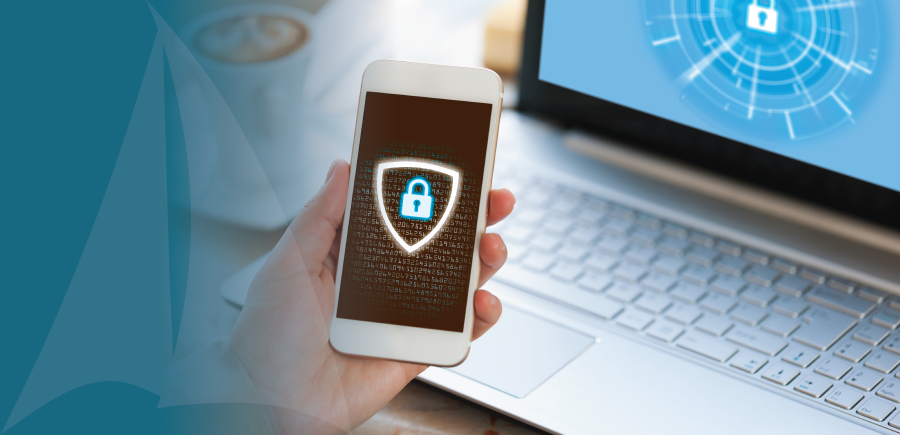not featured
2024-04-29
Fraud
published
3 Minutes
In today's digital age, mobile banking has become an indispensable part of our lives. With just a few taps on our smartphones, we can conveniently access our accounts, transfer funds, pay bills, and even apply for loans. However, this convenience also brings along potential risks, as cybercriminals constantly devise new tactics to steal sensitive financial information.
Protecting your banking information on your mobile device is crucial to safeguarding your financial well-being. Here are some essential tips to help enhance your mobile banking security:
Choose a Secure Banking App:
Before downloading a banking app, ensure it's from a reputable financial institution. Verify the app's legitimacy by checking reviews, ratings, and downloads. Official banking apps are regularly updated with security patches to protect against vulnerabilities. Also, don’t forget to log out of your banking app completely when finished with your session.
SEE WHAT A SECURE MOBILE BANKING APP LOOKS LIKE
Enable Multi-Factor Authentication (MFA):
Implement additional security measures on your mobile device, such as multi-factor authentication. Multi-factor authentication adds an extra layer of security by requiring multiple forms of verification, such as passwords, biometrics (fingerprint or facial recognition), or a one-time code sent via SMS or email. Enable MFA wherever possible to deter unauthorized access to your device.
Additionally, be sure to enable features like Find My iPhone (iOS) or Find My Device (Android) to locate your phone in case your device is lost or stolen.
Use Strong, Unique Passwords:
Avoid using easily guessable passwords or reusing passwords across multiple accounts. Opt for complex combinations of letters, numbers, and special characters. Consider using a reputable password manager to securely store and manage your passwords.
Best practices are to avoid using family members, pets, or names of individuals close to you, and to use different passwords for all protected online accounts and subscriptions.
Keep Your Device Updated:
Regularly update your mobile operating system and banking apps to patch security vulnerabilities and protect against emerging threats. Enable automatic updates to ensure you're always running the latest software versions.
Monitor Your Accounts Regularly:
Stay vigilant by frequently monitoring your bank statements, transaction history, and account activity for any unauthorized or suspicious transactions. Report any discrepancies to your bank immediately to mitigate potential losses.
Use a Secure Wi-Fi Connection:
Public connections aren’t very secure, so avoid performing banking transactions on a public network. If you need to access your account, try disabling the Wi-Fi and switching to your mobile network.
Beware of “smishing” or mobile phishing attacks:
Smishing attacks are becoming more and more prevalent, especially with an increase in social media applications with messaging features. Cybercriminals often use phishing emails, text messages, or fake websites to trick users into revealing their banking credentials.
Avoid opening links and attachments in messages of social apps, as well as in emails and text messages, especially from unknown senders. If a message comes from a known sender but sounds “phishy”, try contacting the individual using a different medium to verify their identity. Additionally, be wary of ads (not from your security provider) claiming that your device is infected; they could be fraudulent.
Curious what a fraudulent message may look like? See some examples here.
A few other tips to take into consideration to protect your device and information are:
- Protect your phone from viruses and malicious software, or malware, just like you do for your computer by installing mobile security software.
- Use caution when downloading apps. Apps can contain malicious software, worms, and viruses. Beware of apps that ask for unnecessary “permissions.”
- Avoid storing sensitive information like passwords or a social security number on your mobile device.
- Notify your financial institution immediately if you change your phone number or lose your mobile device.
- Be aware of shoulder surfers. The most basic form of information theft is observation. Be aware of your surroundings especially when you’re punching in sensitive information.
- Wipe your mobile device before you donate, sell or trade it using specialized software or using the manufacturer’s recommended technique.
By following these proactive measures, you can significantly reduce the risk of falling victim to mobile banking fraud and cybercrime. Remember that maintaining strong security practices is an ongoing effort, and staying informed about the latest security threats and best practices is crucial in safeguarding your financial information. Prioritize your mobile banking security today to enjoy the convenience of digital banking with peace of mind.


